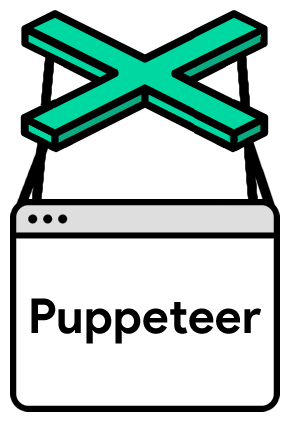PDF Creation Method
- puppeteer:
puppeteer leverages a headless browser to render web pages and capture them as PDFs. This means it can handle dynamic content, JavaScript, and CSS, ensuring that the generated PDF closely resembles the web page.
- pdfkit:
pdfkit allows for programmatic PDF creation from scratch. You can define the layout, styles, and content dynamically, making it highly flexible for generating complex documents with various elements like text, images, and shapes.
- html-pdf:
html-pdf focuses on converting existing HTML content into PDF format. It takes an HTML string or file and generates a PDF, making it easy to create documents from web pages or templates without much coding effort.
Complexity and Customization
- puppeteer:
puppeteer provides advanced capabilities for rendering complex web pages, including support for modern web technologies. It can handle dynamic content and layouts, making it a powerful choice for generating PDFs that reflect the latest web standards.
- pdfkit:
pdfkit offers a high degree of customization, allowing developers to create intricate PDF documents with precise control over every aspect, including text positioning, styling, and graphics. This makes it ideal for applications requiring tailored PDF outputs.
- html-pdf:
html-pdf is relatively simple to use, making it suitable for quick conversions without extensive customization. However, it may not support advanced features like custom fonts or complex layouts as effectively as other libraries.
Performance
- puppeteer:
puppeteer can be resource-intensive since it runs a headless browser. While it excels in rendering complex pages accurately, it may require more memory and processing power, making it less suitable for high-volume PDF generation.
- pdfkit:
pdfkit performs well for generating PDFs from scratch, but the performance can be impacted by the complexity of the document being created, especially with large files or numerous graphical elements.
- html-pdf:
html-pdf is generally fast for simple HTML to PDF conversions. However, performance may vary depending on the complexity of the HTML content and the resources available on the server.
Use Cases
- puppeteer:
puppeteer is perfect for scenarios where you need to capture the exact visual representation of a web page, such as generating PDFs from web applications, capturing screenshots, or creating print-ready documents.
- pdfkit:
pdfkit is ideal for generating custom PDFs where the content is created programmatically, such as reports, brochures, or any documents requiring specific layouts and designs.
- html-pdf:
html-pdf is best suited for applications that need to generate simple PDFs from existing HTML templates, such as invoices, reports, or basic documents where layout complexity is minimal.
Learning Curve
- puppeteer:
puppeteer has a steeper learning curve, especially for developers unfamiliar with browser automation. Understanding how to manipulate the browser context and handle asynchronous operations is essential.
- pdfkit:
pdfkit has a moderate learning curve due to its flexibility and the need to understand the API for creating complex documents. It may require more time to master compared to simpler libraries.
- html-pdf:
html-pdf has a low learning curve, making it easy for developers to get started with PDF generation without needing extensive knowledge of PDF specifications.

